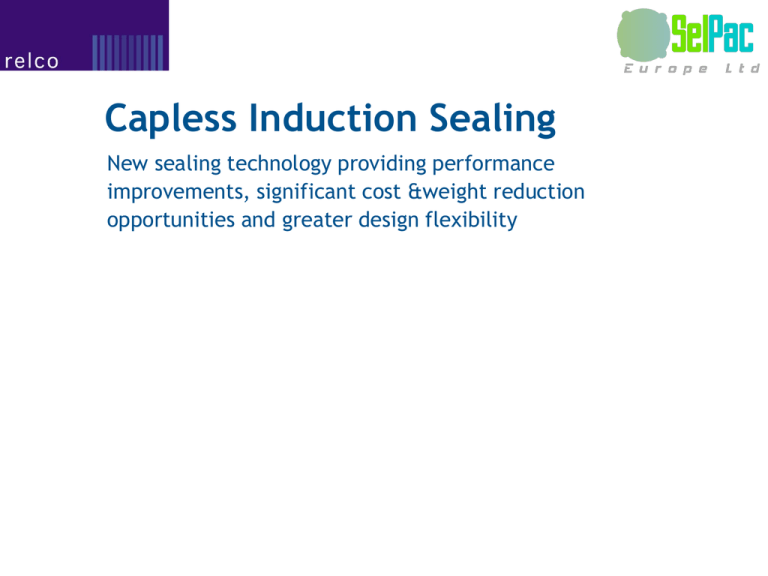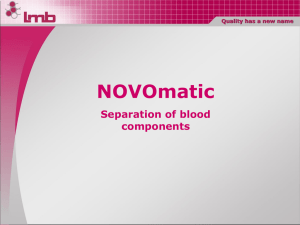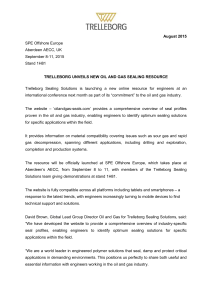Capless Induction Sealing - Selpac ,Manufacture of closure and cap
advertisement

Capless Induction Sealing New sealing technology providing performance improvements, significant cost &weight reduction opportunities and greater design flexibility Benefits of Capless Induction Sealing Provides greater control over sealing process Allows immediate inspection of sealed container Rubber insert in sealing head delivers better compliance with uneven sealing surfaces than is possible with a cap Allows cooling of seal under pressure – better performance with hot-fill products Reduces cap and liner cost Use of new sealing technology provides opportunity for efficiency gains, cleaner production, improved visual appearance of product and enhanced consumer experience with easy to remove foil. Conventional Conduction Sealing Hot, stainless steel sealing head Heat pattern on sealing head face Pressure & heat Heat conducted into foil cap Product 210°C Conventional Induction Sealing Foil lined cap Cap torque presses foil against neck of bottle Foil heated through cap using electromagnetic waves Heat-seal layer melts and bonds foil to bottle Capless Induction Sealing Ambient temperature sealing head Heat insulation material Pressure Heat pattern on foil seal only sealing area of foil is heated 230°C Heat induced into foil where required to form the seal 21°C Product Comparison Between Sealing Systems Conventional Induction Capless Induction Components expensive due to requirements of Can use low cost reel-fed material and light- cap lining process & foil retention in cap weight cap Completely reliant on cap torque for sealing Sealing pressure mechanically applied so is pressure (no control) reliable and measureable Quality assurance difficult to verify as cap Foil can be subject to inspection processes after covers foil application Restrictions on pack design due to With primary seal being formed by foil, cap/foil/thread fit significant flexibility over design of neck finish and closure is provided Comparison Between Sealing Systems Conventional Conduction Capless Induction Inefficient, most of the energy put into the Highly efficient, only the foil seal is heated head is lost into the atmosphere during the sealing process Poor reliability with regular element & Extremely reliable since system is solid state thermocouple failures due to high temperature and sealing head remains at ambient levels within head whilst operating temperature with no thermal stress Difficult to control with temperature time-lag Precise digital control over energy input to head Workplace safety issues with hot surfaces Extremely safe as no hot surfaces present No conformity with hard & irregular surfaces (ie Use of silicone rubber and other face materials PET/Glass ) to provide exact conformity with sealing surface Lost production with warm-up & cool down Instant start-up and shut down for optimum availability The Benefits of Capless Induction Sealing Increased Efficiency Electromagnetic heating within foil, no heat lost into environment Energy only used when machine sealing, zero consumption on standby Total Control Real time digital control over induction power level (temperature) Exact control of induction cycle time Precise control of pressure with rubber head insert for even conformity Ability to maintain pressure on foil during ‘cooling’ phase Measurement of induction power on each seal possible =100% QA validation Improved Productivity Significant reliability improvements as no heat is present in the components Instant start-up & shut-down Fast sealing cycle times Clean sealing Greater operator safety with cold sealing head Examples of Capless Induction Sealing Metal High Accuracy Plastic Non-Round Glass Print Register






